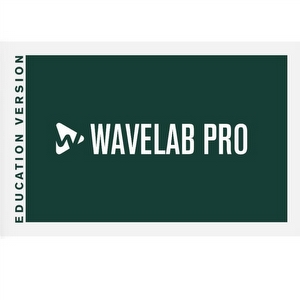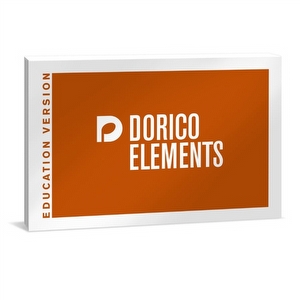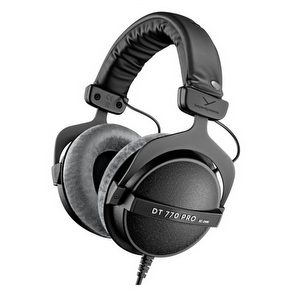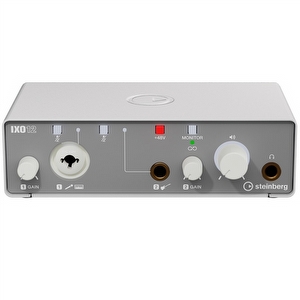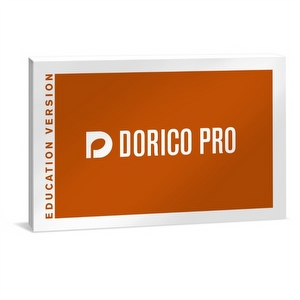Steinberg Cubase Pro 14 Crossgrade
Why Joh.deHeer?
- 126 Years of experience
- 2500M2 Showroom
- Effective Customer Service
- Customers rate Joh.deHeer 9.5/10
- Description
- Specifications
- Graduated calculations
- Demonstration request
Do you already have another recording software, but want to upgrade to Cubase? The Crossgrade version is the ideal choice for you! You can get the Cubase Pro 14 Crossgrade Discount with proof of purchase of another DAW.
Eligible DAWs:
- Ability Pro
- Ableton Live 8 or higher
- Apple Logic 9 or higher
- Avid Pro Tools 9 or higher
- Bitwig Studio 1 or higher
- Cakewalk Sonar X2 or higher
- Cockos Reaper
- Imageline FL Studio 11 or higher
- Magix Samplitude Pro X 1 or higher
- Magix Sequoia 9 or higher
- Presonus Studio One
- Propellerhead Reason 6 or higher
- MOTU Digital Performer 7 or higher
Cubase
Cubase is one of the best recording programs in the industry. Cubase is thus increasingly used by professionals. This is because Cubase is a versatile program that works very intuitively. There are technically three different versions of Cubase: Elements, Artist, and Pro. These three versions have different prices and consequently also different functions and plug-ins. Elements is the most affordable version and has thus the least functions and plug-ins, whilst Pro has all the functions and plug-ins. The Artist version falls exactly in between the two. These three versions make Cubase a lot more accessible for beginners because you can already do a lot with just Elements without having to pay hundreds of euros. Do you want to upgrade? No problem, you don’t have to pay the full price of the next program but only the upgrade price.
Pro
Pro is, although quite an investment, the best version of Cubase. You can record different instruments and vocals with so little latency it won’t even be noticeable. Furthermore, all the bars are separated in handy boxes which makes synchronising, cutting, pasting, and dragging a lot easier. Pro also has access to Gain Staging, with which you can alter the gain of individual waves within a single audio recording. The system also has a built-in metronome so you can record your parts whilst staying on beat. Do you dislike the sound of the metronome? No problem, you can choose between different sounds and pitches. Recorded audio is also easy to edit with the added tools (like fades and EQ), effects, and plug-ins. Consequently, you can make the recording as beautiful as possible. Additionally, Steinberg made sure that there are sounds, effects, and plug-ins for every single genre possible. Pro also gives you access to VariAudio 3, which makes it possible to alter the pitch of individual notes of monophonic audio. You can also quantize multiple tracks at the same time and with ARA support editing the audio becomes even easier. With the Project Browser, Track Archives, and Project Import navigating the program will be a lot easier. Pro also gives you access to Audio Alignment, which automatically synchronizes your audio perfectly. This is especially nice if you struggle with latency. Furthermore, you can edit multiple tracks simultaneously with Group Editing. The program can be used with MIDI devices or through an interface. Pro 14 also now has a Score Editor, based on the popular Dorico, with which you can create sheet music within the program. The Score Editor works great with MIDI notes and devices.
The Differences
Although upgrading isn’t more expensive than buying a bigger version, so Elements is still a recommended start, it is important to know what functions and plug-ins Elements doesn’t have that the other versions do. One of the most important differences is that Elements has a limited amount of tracks, with a maximum of 48 audio tracks and 64 MIDI tracks. For most modern music this is probably sufficient, but if you want to add many instruments or harmonies it can run out quickly. On the other hand, Artist and Pro have an unlimited amount of tracks. Pro and Artist also have access to Gain Staging. With this tool, you can select individual waves within a single audio recording and change the gain easily. Another important difference is that Artist and Pro have more plug-ins, like guitar and bass amps and master tools, than Elements. However, Elements has a relatively large amount of plug-ins which will be sufficient for some. Furthermore, you can buy plug-ins separately and use them with Elements. With Elements you are also limited to 16 groups whereas Artist has a limit of 32 and Pro has a limit of 256. Lastly, Elements simply has the least amount of functions that make recording, mixing, and mastering a lot easier and faster. Functions that Elements doesn’t have include: Workspaces, Advanced Audio Export, Tempo Track, Global Transpose Track, Note Expression, Comping, Group Editing, and many more.
New in Cubase 14
Cubase 14 has some awesome updates. For example, the Pro version now has improved and intuitive new modulators so it has become easier to add more dynamics to your music. Pro and Artist also have improved rhythm machines and editing the rhythm patterns has become easier with the new Pattern Sequencer. Pro and Artist also have new atmosphere plugins, like Interstellar Soundscapes, Autio Filter, and Sonic Playground. A handy and important update is that with Pro and Artist you now have access to Gain Staging, with which you can edit the gain of individual soundwaves within a single audio file. All versions also come with a new score editor, with which you can turn MIDI notes and recordings into sheet music. Moreover, all versions now have an improved mixing panel. They changed the layout to make it easier to see and easier to use. It now also has a drag and drop feature so you can rearrange the channels within the mixing panel. All versions also have the new Underwater plugin with which you can change the atmosphere and space of a recording. Additionally, MediaBay has become more intuitive and previewing audio files has become easier. Furthermore, backup recordings will now be saved in a separate Autio Save folder. Lastly, they also improved the Range Tool, making cutting/pasting/dragging audio files easier and smarter.
Keep in mind: this product is software, there are no physical items included.
Would you like to test this product?
Visit our store and try it out.
- Description
- Ability Pro
- Ableton Live 8 or higher
- Apple Logic 9 or higher
- Avid Pro Tools 9 or higher
- Bitwig Studio 1 or higher
- Cakewalk Sonar X2 or higher
- Cockos Reaper
- Imageline FL Studio 11 or higher
- Magix Samplitude Pro X 1 or higher
- Magix Sequoia 9 or higher
- Presonus Studio One
- Propellerhead Reason 6 or higher
- MOTU Digital Performer 7 or higher
- Specifications
- Graduated calculations
- Demonstration request
Do you already have another recording software, but want to upgrade to Cubase? The Crossgrade version is the ideal choice for you! You can get the Cubase Pro 14 Crossgrade Discount with proof of purchase of another DAW.
Eligible DAWs:
Cubase
Cubase is one of the best recording programs in the industry. Cubase is thus increasingly used by professionals. This is because Cubase is a versatile program that works very intuitively. There are technically three different versions of Cubase: Elements, Artist, and Pro. These three versions have different prices and consequently also different functions and plug-ins. Elements is the most affordable version and has thus the least functions and plug-ins, whilst Pro has all the functions and plug-ins. The Artist version falls exactly in between the two. These three versions make Cubase a lot more accessible for beginners because you can already do a lot with just Elements without having to pay hundreds of euros. Do you want to upgrade? No problem, you don’t have to pay the full price of the next program but only the upgrade price.
Pro
Pro is, although quite an investment, the best version of Cubase. You can record different instruments and vocals with so little latency it won’t even be noticeable. Furthermore, all the bars are separated in handy boxes which makes synchronising, cutting, pasting, and dragging a lot easier. Pro also has access to Gain Staging, with which you can alter the gain of individual waves within a single audio recording. The system also has a built-in metronome so you can record your parts whilst staying on beat. Do you dislike the sound of the metronome? No problem, you can choose between different sounds and pitches. Recorded audio is also easy to edit with the added tools (like fades and EQ), effects, and plug-ins. Consequently, you can make the recording as beautiful as possible. Additionally, Steinberg made sure that there are sounds, effects, and plug-ins for every single genre possible. Pro also gives you access to VariAudio 3, which makes it possible to alter the pitch of individual notes of monophonic audio. You can also quantize multiple tracks at the same time and with ARA support editing the audio becomes even easier. With the Project Browser, Track Archives, and Project Import navigating the program will be a lot easier. Pro also gives you access to Audio Alignment, which automatically synchronizes your audio perfectly. This is especially nice if you struggle with latency. Furthermore, you can edit multiple tracks simultaneously with Group Editing. The program can be used with MIDI devices or through an interface. Pro 14 also now has a Score Editor, based on the popular Dorico, with which you can create sheet music within the program. The Score Editor works great with MIDI notes and devices.
The Differences
Although upgrading isn’t more expensive than buying a bigger version, so Elements is still a recommended start, it is important to know what functions and plug-ins Elements doesn’t have that the other versions do. One of the most important differences is that Elements has a limited amount of tracks, with a maximum of 48 audio tracks and 64 MIDI tracks. For most modern music this is probably sufficient, but if you want to add many instruments or harmonies it can run out quickly. On the other hand, Artist and Pro have an unlimited amount of tracks. Pro and Artist also have access to Gain Staging. With this tool, you can select individual waves within a single audio recording and change the gain easily. Another important difference is that Artist and Pro have more plug-ins, like guitar and bass amps and master tools, than Elements. However, Elements has a relatively large amount of plug-ins which will be sufficient for some. Furthermore, you can buy plug-ins separately and use them with Elements. With Elements you are also limited to 16 groups whereas Artist has a limit of 32 and Pro has a limit of 256. Lastly, Elements simply has the least amount of functions that make recording, mixing, and mastering a lot easier and faster. Functions that Elements doesn’t have include: Workspaces, Advanced Audio Export, Tempo Track, Global Transpose Track, Note Expression, Comping, Group Editing, and many more.
New in Cubase 14
Cubase 14 has some awesome updates. For example, the Pro version now has improved and intuitive new modulators so it has become easier to add more dynamics to your music. Pro and Artist also have improved rhythm machines and editing the rhythm patterns has become easier with the new Pattern Sequencer. Pro and Artist also have new atmosphere plugins, like Interstellar Soundscapes, Autio Filter, and Sonic Playground. A handy and important update is that with Pro and Artist you now have access to Gain Staging, with which you can edit the gain of individual soundwaves within a single audio file. All versions also come with a new score editor, with which you can turn MIDI notes and recordings into sheet music. Moreover, all versions now have an improved mixing panel. They changed the layout to make it easier to see and easier to use. It now also has a drag and drop feature so you can rearrange the channels within the mixing panel. All versions also have the new Underwater plugin with which you can change the atmosphere and space of a recording. Additionally, MediaBay has become more intuitive and previewing audio files has become easier. Furthermore, backup recordings will now be saved in a separate Autio Save folder. Lastly, they also improved the Range Tool, making cutting/pasting/dragging audio files easier and smarter.
Keep in mind: this product is software, there are no physical items included.
Would you like to test this product?
Visit our store and try it out.

.jpg)
.jpg)

.jpg)
.jpg)
.jpg)
.jpg)
.jpg)


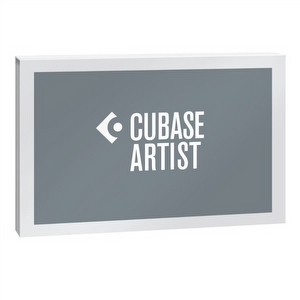

.jpg)
.jpg)
.jpg)
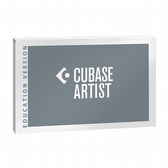
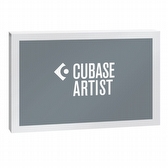
.jpg)
